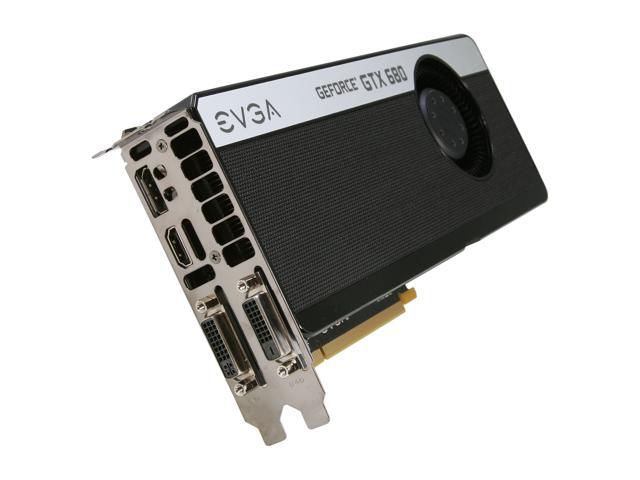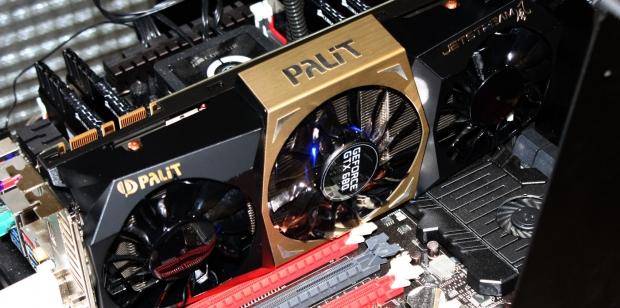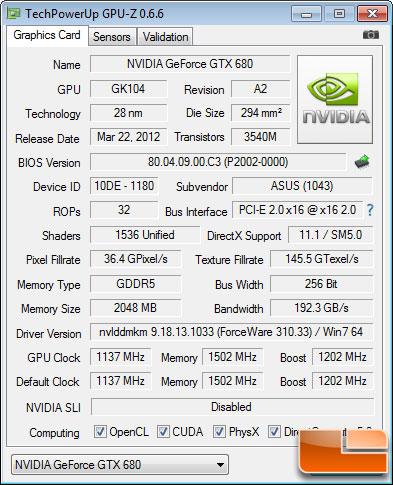

- #NVIDIA GTX 680 VIDEO CARD 1080P#
- #NVIDIA GTX 680 VIDEO CARD FULL#
- #NVIDIA GTX 680 VIDEO CARD SERIES#
Then there are the cards lower down the 600 series a GTX 660 TI sits at around the £260 mark, and with a few card manufacturers throwing in Borderlands 2 as an added free bonus. The cheapest we’ve seen the card is at around the £410 mark, making it a fair chunk more expensive than the outgoing GTX 580, which can now be grabbed at as low a price as £230 if you shop around.

With performance like this then, the only qualm will lay with price.

While we’ve yet to try a game that makes use of the card’s PhysX potential, the buzz around Borderlands 2 suggests the GTX 680 again has the edge over AMD rivals, offering superb performance with destructive environments and tiny particles, as well as boasting improved cloth animation and degradation. Likewise, our heavily-modded version of Skyrim (at Ultra settings, no less) only just dipped below the 60 FPS holy grail constant, even when playing through GPU intense areas, such as the trek down from the top of Whiterun Hold, and the on-rails intro sequence. The notoriously-picky, DirectX 11 heavy Metro 2033, bounced along at some of the finest frame rates we’ve seen from a single card at stock clock levels, even with multiple enemies on screen at once and advanced lighting techniques in play.

Installed on a fairly average rig (Intel Core i7-920 processor, 6GB triple channel RAM, 1920x1080p resolution), the GTX 680 offered silky-smooth frame rates on even the most demanding of games. The Elder Scrolls V: Skyrim (“Ultra” settings, 1080p, multiple high resolution texture mods): 56.539 average FPS
#NVIDIA GTX 680 VIDEO CARD 1080P#
Rage (“High quality” settings, 1080p with custom config – improved texture cache, GPU transcode): 61 average FPS
#NVIDIA GTX 680 VIDEO CARD FULL#
Metro 2033 (DirectX 11, 1080p, AAA antialisaing, AF 16X texture filtering, full shadow filtering, full voumetric texture filtering): 64.179 average FPS With a fair bit of overhead room for overclocking, the card can be pushed significantly further too – alongside the aforementioned GPU Boost tech you can easily get to the 1,200MHz mark, and often be stable at 1,300MHz without much effort. Performance Score (720p, MSAA Sample Count 1, Trilinear Texture filtering, Maximum Tesselation Factor 10): 9635Įntry Score (1024×600, MSAA Sample Count 1 Trilinear Texture filtering, Maximum Tesselation Factor 6): 15675Ĭompared to the rival AMD HD 7970, the GTX 680’s 3DMark11 scores average out at slightly higher at stock speeds. It’s a card therefore as at home in the hands of tinkering newbies as it is overclocking masters we’ve comfortably hit 1,300MHz during testing.Įxtreme Score (1080p, MSAA Sample Count 4, Anisotropic Texture filtering, Maximum Tesselation factor 15): 3066 If that 1,006MHz base clock speed seems low, it’s because Nvidia have primed the cards to adaptively boost clock speeds, analysing the amount of power an application is using and boosting the GPU frequency appropriate to the amount of extra headroom it has at its disposal. The card is further helped in its power-saving mission thanks to the newly-introduced GPU Boost feature. Put this alongside the 244W GTX 580 and 230W HD 7970, and this is a card considerably less taxing on your power supply. At its base clock of 1,006MHz, it hits 195W at full load. Even with the shrink, it’s pushing as many as 500 million transistors more than the GTX 580. You’re looking at the GTX 680’s GK104 GPU as a 295mm2 chip compared with the 520mm2 GF110 in the GTX 580. The new “Kepler” architecture for the 2012 GeForce GTX series see the card shrinking the die size for a 28nm production process. On-board Outputs: DVI, DVI, HDMI, DisplayPort


 0 kommentar(er)
0 kommentar(er)
